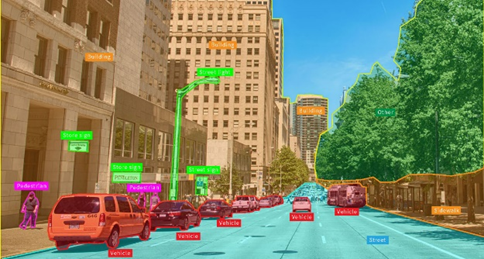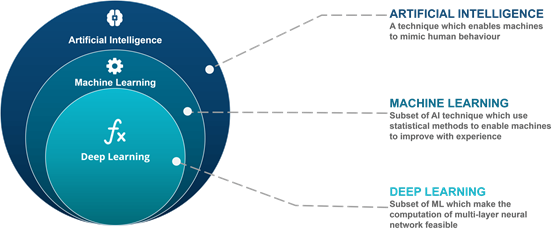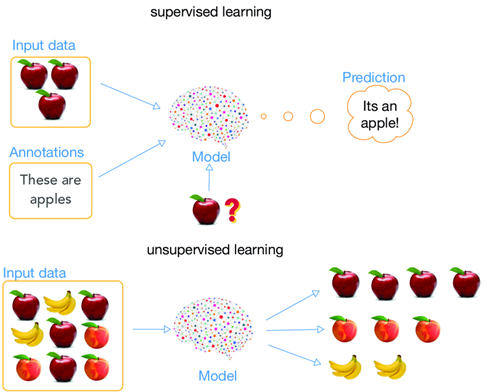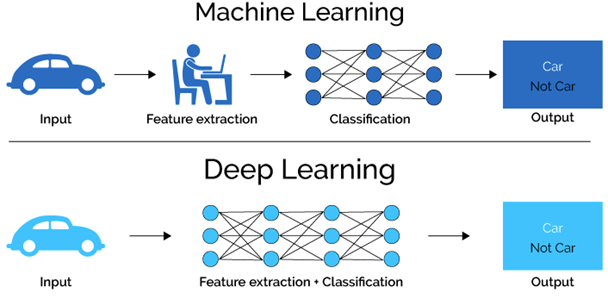Understanding Deep Learning: A Comprehensive Overview
Written on
Chapter 1: Introduction to Artificial Intelligence
Before delving into deep learning, it's essential to understand artificial intelligence (AI) and its applications. The primary objective of AI is to create algorithms capable of solving problems that humans find intuitive but are complex for machines. These problems can range from interpreting image content to detecting various road users. Below is an illustration of such a system's output.

AI is utilized in applications such as pattern recognition and data analysis. A term frequently encountered in literature is Artificial Neural Network (ANN), which refers to algorithms that simulate the functioning of human brain cells.
Machine Learning (ML), a subset of AI, employs statistical methods to enable machines to enhance their performance based on experiences related to the specific problems they address.

The learning process in an ML system is categorized into three approaches:
- Supervised Learning: The model is trained using known input-output pairs, allowing it to predict future outputs.
- Unsupervised Learning: The model identifies hidden patterns in data without labeled inputs.
- Semi-Supervised Learning: This hybrid approach combines elements of the first two methods.
To illustrate supervised versus unsupervised learning, consider fruit classification. In supervised learning, the model uses labeled data to determine if a fruit is an apple based on features such as color and shape. Conversely, unsupervised learning utilizes those same features to differentiate between fruits without prior knowledge of their types.

Chapter 2: The Distinction Between Learning Approaches
Before transitioning to deep learning, it is crucial to note that unsupervised learning is typically applied when labeled data is unavailable, with the goal of uncovering hidden patterns in the data. This method is often referred to as clustering. Common algorithms used in this approach are listed below. In supervised learning, two additional types of algorithms come into play: classification (like the apple example) and regression (e.g., predicting weather temperature).

Deep learning is a specialized area within ML that emulates the way humans acquire certain knowledge types. A fundamental component of modern Neural Networks is the backpropagation algorithm, which facilitates efficient training and learning from errors. What is this backpropagation algorithm? Simply put, it involves a backward pass that adjusts the model’s parameters (weights and biases) based on the output from the forward pass compared to the known ground truth.
Deep learning approaches problems through a hierarchy of concepts, starting from basic representations and progressing to more abstract forms. For instance, pedestrian detection begins with edge and contour detection (low-level) and then uses connections between these edges to identify a pedestrian (high-level). Convolutional Neural Networks (CNNs) are often termed "end-to-end learners" because they eliminate the need for manual feature extraction.
“When creating CNNs, we can bypass the feature extraction process as CNNs are end-to-end models.”
In deep learning, the necessary features are automatically learned during training, allowing a focus on network training rather than manual feature extraction steps. The diagram below highlights the key differences between machine learning and deep learning.

In the term "Deep Learning," the "deep" signifies the number of layers within the network. There is no universally accepted definition of how deep a network must be to qualify as "deep," but a common threshold is a network with more than ten layers.
“As the network depth increases, so does classification accuracy.”
This concludes our brief overview of deep learning. If you have any thoughts or questions, feel free to share them in the comments.
To wrap up this article, here is the “Quote of the Article”:
“Continuous effort, not strength or intelligence, is the key to unlocking our potential.” – Liane Cordes
Cheers!
This first video provides a beginner-friendly introduction to deep learning concepts and applications.
The second video discusses the differences between machine learning and deep learning, highlighting key characteristics and applications.